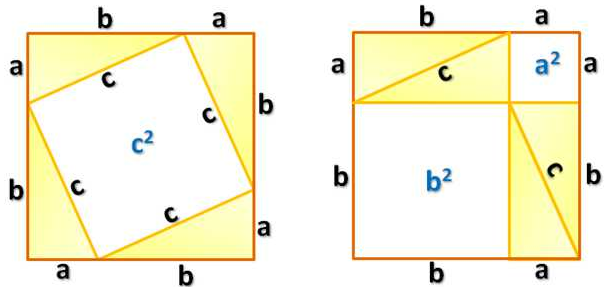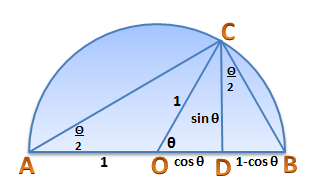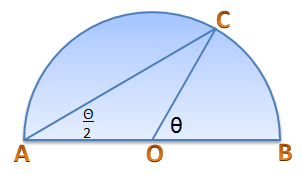In Proof of the Sum of Square Numbers, I have mentioned about proof without words. Some of you are probably wondering what they are, so I will discuss in detail.
Proof without words are diagrams or pictures that help readers see why a particular statement is true even without accompanying explanations. One example is a classic proof of the Pythagorean theorem shown in the first figure.

In the example, we have two congruent squares. There are four congruent right triangles occupying portions of both squares. It is clear that the total area occupied by the triangles in the first diagram is equal to the total area occupied by the four triangles in the second diagram. If the occupied areas on both squares are equal, it follows that the unoccupied areas are also equal (Why?). Therefore,  . Now, that proves the Pythagorean theorem.
. Now, that proves the Pythagorean theorem.

Proofs without words cannot always be considered as “proof” in the formal sense. For instance, the second figure cannot be considered as a proof since only four cases are shown. The generalization of the figure shows that the sum of the first  positive odd integers (group the numbers by colors) is a square of its nth term or
positive odd integers (group the numbers by colors) is a square of its nth term or
 .
.
The formal proof of the equation can be demonstrated using mathematical induction.
***
I am currently reading a collection of Proofs without Words by Roger Nelsen. You may want to check it out.




